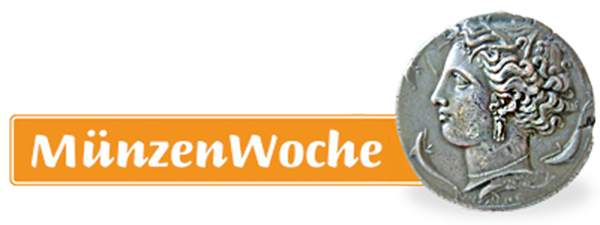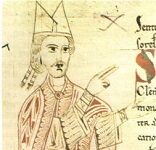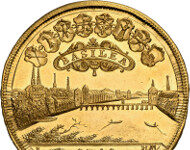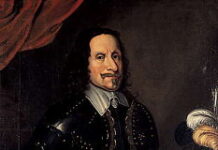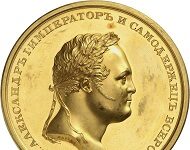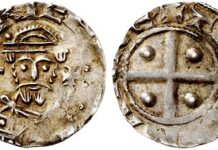A coin is being made – the Swiss commemorative coins celebrating the opening of the Gotthard Base Tunnel
It takes much effort and planning until a collector can purchase his commemorative coin that will serve as a memento of an event which – like the opening of the Gotthard Base Tunnel – will become part of the national myth.
Medieval Sicily Part 7: Reaching for the stars
The general political climate made it possible for the Sicilian ruler in the end of the world to reach for the stars and try to conquer Constantinople.
Egypt and Alexandria. A brief numismatic survey: part V
Join us on our trip through the history of Egypt and its capital Alexandria by its coinage. In the final episode you become a witness to the revolt of Zenobia, Queen of Palmyra, and Alexandria’s transition into late antique times.
A prestigious cityscape
Numismatica Genevensis will auction off a 20 ducat piece of the city of Basel with a gorgeous cityscape on November 25, 2014. The estimate amounting to 500,000 Swiss francs is likewise remarkable. There is a good chance that this coin becomes the world’s most expensive Swiss coin.
Human faces, part 34: A “terrible” Pope
Why does this coin feature both the Pope and the trademark of an influential merchant family? This coin, portraying Julius II and the Fugger family business, illustrates that economy and religion always have and always will go hand in hand.
The Thirty Years’ War – Part 14 (1634-1635)
Religion was of secondary importance in the Thirty Years’ War. It was all about power and money. Ursula Kampmann brings that era alive. Despite the deaths of the Winter King, Gustavus Adolphus and Wallenstein, the war went on as if nothing had happened.
George Gustav of Pfalz-Veldenz
On February 4th, 2016, Künker Auction House, during its Berlin auction, will offer an extensive series of pre-1871 German rarities. Among them, there will be an extremely rare taler of the count of Veldenz.
The die cutting czarina
“Made by Maria” can be read in Russian on the reverse of a medal, which will be auctioned off on June 21st, 2016 at Künker. It is remarkable, that a woman created these dies, and the story gets even more interesting, knowing that this die cutter was a Russian czarina.
Medieval Sicily Part 8: Rome, acclaimed and plundered
Pope Gregory VII had to watch helplessly as Henry entered Rome and was crowned emperor. Admittedly, the Norman Robert Guiscard came to his aid, but that almost made things worse.
Human Faces Part 12: Augustus, Peacemaking Emperor or Mass Murderer?
Why is it that for centuries – or rather thousands of years – the head has served as the motif for the side of a coin? And why has this changed in the last 200 years? This chapter of the series ‘Human Faces’ looks at Augustus and his new image following the Civil War.


